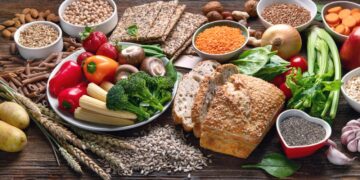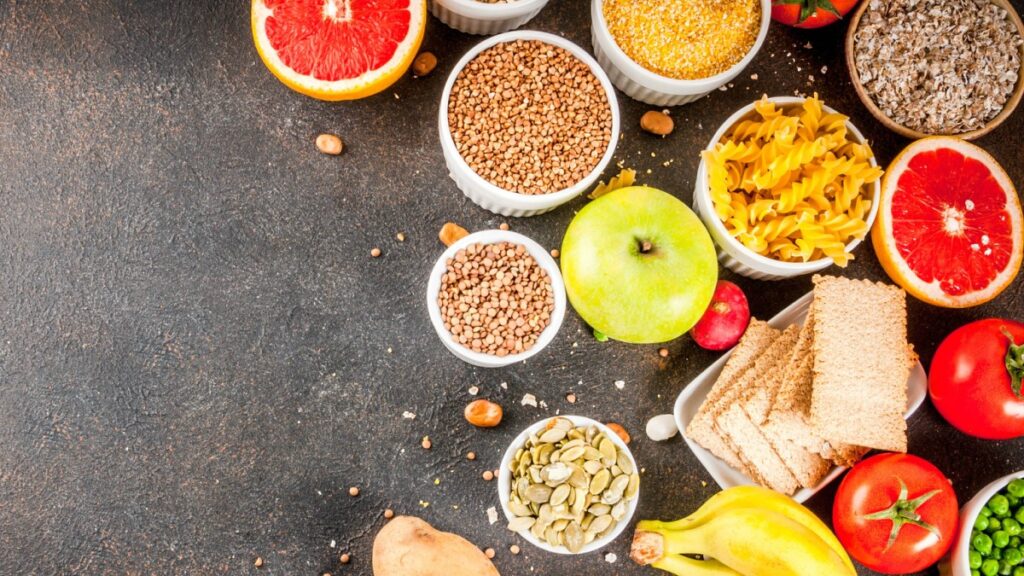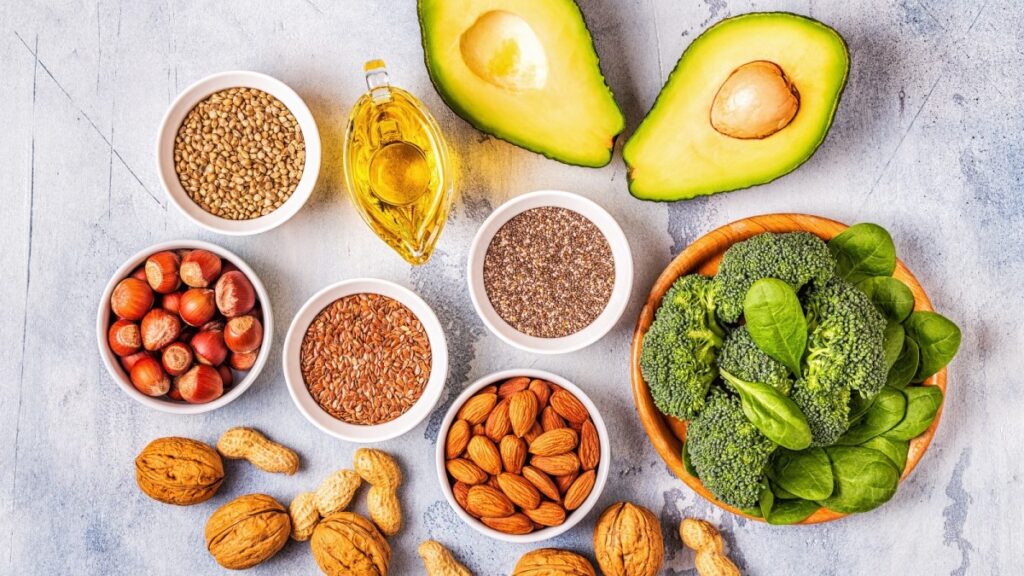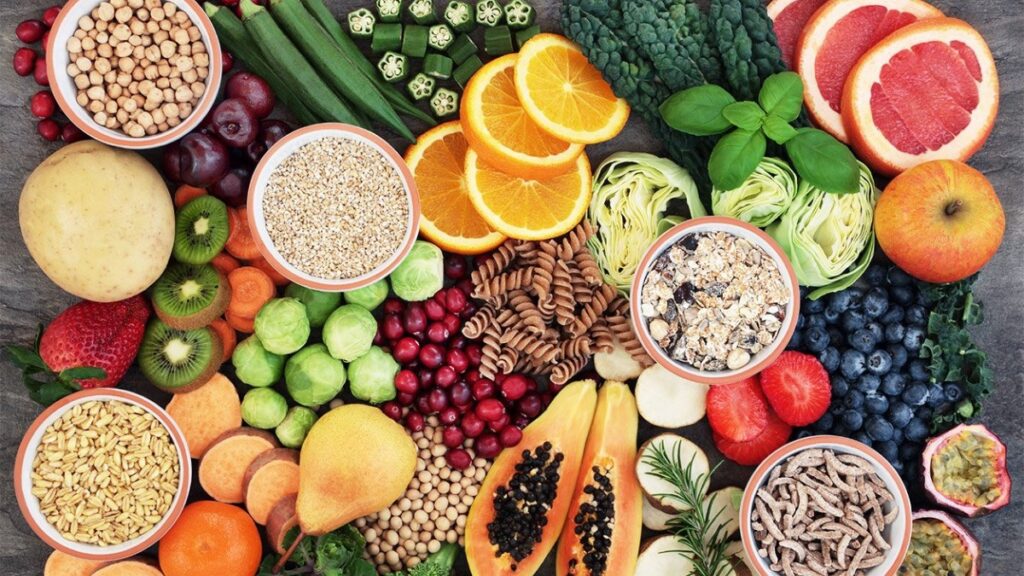At first, it sounds like a contradiction: why should I eat something in large quantities, which is then hard to digest later in the stomach? That leads us first to the question: what are dietary fibers anyway? Plant fibers from cereals, rice, vegetables or fruit – especially many of them are found in whole-grain products.
This is why the body needs foods rich in dietary fiber
Rather than lying inert in the stomach, dietary fiber binds water and swells. This provides a quick and long-lasting feeling of satiety. In addition, drinking plenty of (water) is the order of the day with dietary fiber, which additionally helps with weight loss!
However, the positive effects start in the mouth: Fiber-rich food must be chewed well – thus, saliva production increases, protecting against caries and periodontosis. In addition, high-fiber foods stimulate digestion. PH levels in the intestines are lowered by fiber, making them less susceptible to pathogenic bacteria. Stools become softer, thus relieving pressure on the intestines, disorders such as constipation can be prevented. Studies also suggest that fiber significantly reduces the risk of colon cancer.
Foods with good fiber content can do even more for our bodies, however: According to studies, it helps lower cholesterol levels and improve blood sugar levels. People with diabetes are advised to eat a diet high in fiber. This may help prevent type 2 diabetes.
How much fiber do I need?
According to many sources, at least 30 grams of dietary fiber are recommended daily. But Americans usually eat just 23 to 25 grams, and many only 20 grams. 68% of men and 75% of women do not reach the guideline value, according to sources.
The top 30 high-fiber foods
In the following table we have listed the top 30 fiber rich foods with with dietary fiber per 100 grams.
| space | Food | Dietary fiber per 100 g, in grams |
|---|---|---|
| 1. | Wheat bran | 45.1 |
| 2. | Linseed | 38.6 |
| 3. | Chia seeds | 34.4 |
| 4. | Grated coconut | 24 |
| 5. | White beans | 23.2 |
| 6. | Soy Meat & Beans | 22 |
| 7. | Dried plums | 18.8 |
| 8. | Salsify | 18.3 |
| 9. | Bran flakes | 18 |
| 10 | Dried apricot | 17.3 |
| 11. | Lenses | 17 |
| 12. | Peas | 16.6 |
| 13. | Chickpeas | 15.5 |
| 14 | Bread with fruits | 14 |
| 15 | Crispbread | 14 |
| 16 | Wholegrain rye flour | 13.9 |
| 17 | Pear dried | 13.5 |
| 18 | Jerusalem Artichoke | 12.1 |
| 19 | Peanut kernels | 11.7 |
| 20 | Wholemeal Wheat Flour | 11.7 |
| 21 | Peach dried | 11.7 |
| 22 | Macadamia nuts | 11.4 |
| 23 | Sesame seeds | 11.2 |
| 24 | Artichoke | 10.8 |
| 25 | Apple dried | 10.7 |
| 26 | Pistachio nuts | 10.6 |
| 27 | Amaranth | 10.3 |
| 28 | Whole grain oatmeal | 10 |
| 29 | Corn | 10 |
| 30 | Stye | 9.8 |
A diet rich in fiber: This is how it works in everyday life
The good news: if you eat a reasonably fit and conscious diet, you can’t avoid fiber-rich foods anyway. They are found in fruits and vegetables, especially in unprocessed foods, according to the Clean Eating food trend.
Therefore, a diet rich in fiber can be easily integrated into everyday life. Three servings of fresh vegetables, two of fruit, and whole grain products such as brown rice and whole grain pasta are already enough for an excellent essential supply.
Foods of animal origin, particularly meat and sausage, need to be reduced. From the top 30 list above, you will not be able to consume all the foods in the appropriate amounts to really get the optimal benefit. However, Wheat Bran and Flaxseed, for example, make great sprinkles on your cereal.
Also Read:
Lose Weight Easily: The Ultimate Guide to Intermittent Fasting
11 Best Methods to Lose Weight After Forty
Other everyday tips
- Great sources of fiber, such as legumes like lentils and peas, can be used in various ways – as a soup, a side dish, a warm salad, or as a delicious spread on whole-grain baguettes.
- Pasta made from lentils is a new alternative to pasta. Those looking for variety should also venture into lesser-known sources of nutrients – like bulgur or pearl barley.
- Grains and their products in the whole-grain variety also contain plenty of fiber: Whole-wheat flour, for instance, has three times more fiber than regular wheat flour.
- With normal fruit, Berries are far in front (blueberries with 5 Grams of dietary fiber per 100 grams).
- Each meal should be spiced up with raw vegetables and greens. Solid varieties such as peppers, fennel and carrots contain significantly more fiber than water-rich varieties such as zucchini or cucumbers.
High fiber diet: the example calculation for the day
Here, the German Nutrition Society (DGE) has constructed a sample day that shows you how much you can eat (more) fiber with a conscious diet and easily reach the daily recommendation. Compare this to a “normal” day:
Start the day in the morning with whole grain cereal and dried fruit or fresh fruit. For a snack in between, you eat an apple and two carrots. For lunch, two to three potatoes accompanied by two tubers of kohlrabi or legumes such as lentils, green beans or chickpeas, followed by red berry porridge. Three slices of whole-grain bread are served for dinner, and you’re well on your way. However, it’s good to start in small steps – or else there’s a risk of flatulence.




















































Discussion about this post